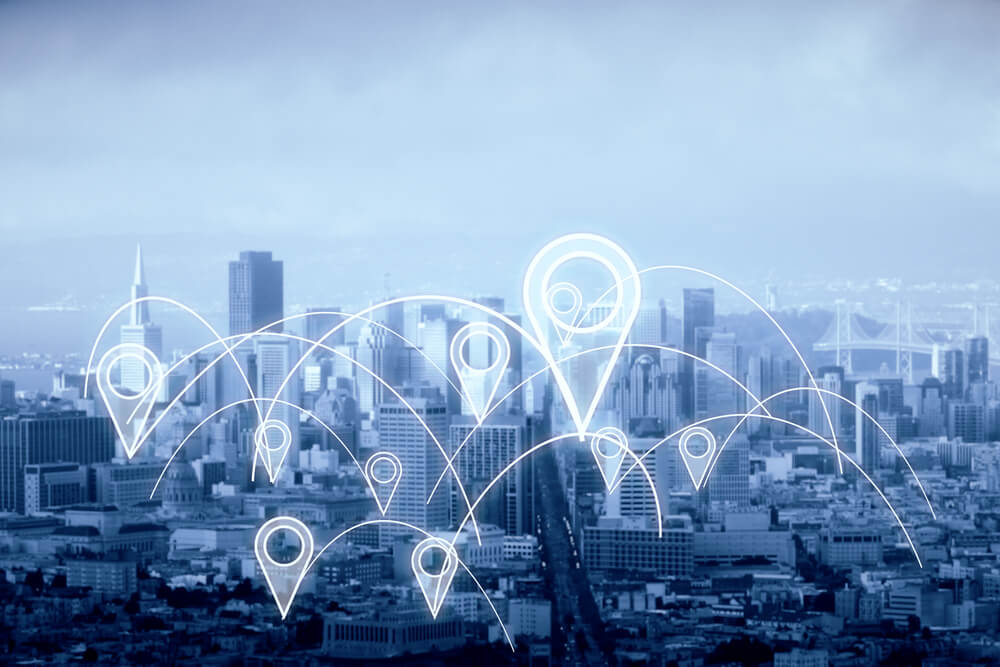Geolocation Versus Geotagging: What Is the Difference?
Posted on December 26, 2019
As the world turns into a global village because of the Internet and other technological innovations, it’s interesting to note that location data remains indispensable. In marketing, for instance, geographic market segmentation has always been effective in augmenting a company’s overall strategy, and we don’t see this changing anytime soon.
Knowing the location of their target market enables marketing professionals to start conversations, send personalized messages, and effectively build their companies’ brand image. In the 2018 Location-Based Marketing Report conducted by Lawless Research, marketers said they enjoyed the following advantages when they incorporated location data in their marketing tactics:
- Growth in their customer base (85%)
- Higher customer engagement (83%)
- Higher response rate (83%)
- More in-depth knowledge of customers’ needs and interests (74%)
- Improved return on investment (ROI) (74%)
- Increased lift (70%)
All these help companies achieve their bottom line — increase their net income. The coming years will continue to see location-based marketing implemented by different companies in a wide range of industries.
There are two methods of location-based marketing that are currently catching on — geolocation and geotagging. Some marketers use these terms interchangeably. However, they aren’t exactly the same. In this post, we explore both concepts and the differences between them.
What Is Geolocation?
Geolocation is the process of identifying the geographical location of a person based on the digital information given off by his/her Internet-connected device. While several technologies can be used to determine a person’s geolocation, one reliable way is to use his/her IP address. The following geographical details can be gleaned from knowing one’s IP address:
- Country
- Region, state, or province
- Latitude and longitude
- Time zone
- City
- Postal code
IP Geolocation API can return all these details with high accuracy as its database has 30,097,902 IP ranges (both IPv4 and IPv6) in 250 countries. That’s equivalent to 260,568 unique locations. But how does this data source help marketers? We explored three use cases below.
1. Web Content Personalization
A report by Smart Insight revealed that 74% of consumers become frustrated when they can’t relate to the content they see. As such, Web content personalization is valuable for its ability to enhance customer experiences.
On the other hand, some consumers are not comfortable with too much personalization because they feel their privacy is on the line. To address this issue and create a balance between personalization and maintaining consumer privacy, marketers use non-invasive methods such as IP geolocation. By knowing the general physical location of a customer, marketers can present Web content in his/her language, while taking into account cultural aspects and local currencies as well.
2. Mobile Marketing
Geolocation data can also be used in conjunction with geofencing to provide real-time alerts to customers via mobile apps. When the geolocation data of an app user, for instance, reveals he/she is within a company’s geofence, an alert can be triggered to inform him/her of a special offer or other promotions.
3. Pricing Strategies
As one of the four Ps of the marketing mix, price plays a significant role in the success of a product or service. Geolocation data can be used to help improve establishments’ pricing strategies.
Aside from the cost of a product or service, factors such as currency conversion rates, customs fees, and tax rates should be considered when developing pricing strategies. And since these often depend on the buyers’ location, companies can better maximize profits when they feed geolocation data into their dynamic pricing.
What Is Geotagging?
Geotagging is the process of adding geographical details to a photo, a video, or any media in the form of metadata. It helps people find where a picture or video was taken or where an article or social media update was posted.
In the digital marketing world, geotagging is most evident in the social media. For example, an IT manager uploads photos and videos on Instagram while at a tech conference. In turn, the convention center where the conference is being held gets automatically tagged as the location, if the user’s device enables location sharing. Regardless of the timing of a geotag, marketers at a software company can gather significant leads by checking social media posts tagging the said location.
Geolocation Versus Geotagging
Geotagging makes use of geolocation data. So, pitting geolocation versus geotagging is akin to comparing the concept of the target market with the buyer persona. Users’ knowledge of the target market paves the way for developing a service’s or a product’s buyer persona, just as much as geolocation feeds a user’s ability to geotag.
Knowing the target market also leads users to develop products, services, promotions, and prices specific to customer needs and desires. In the same way, geolocation data can be used to fuel different marketing strategies such as Web content personalization, mobile marketing, and pricing strategies.
IP Geolocation API provides reliable geolocation data that users can rely on for geotagging and other purposes. Its database is updated daily, ensuring users that the information they get enables them to make strategic and informed marketing decisions.
Read the other articles